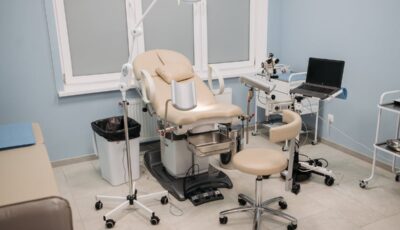
Male and female pattern baldness are both most commonly caused by androgenic alopecia. By the age of 40, it is estimated that 40% of men notice baldness. This percentage rises as one gets older. Hair loss patterns are frequently different between genders. Men typically develop baldness along the frontal hairline, which recedes with age and deepens along the temporal region. With time, the hairline becomes narrower and higher. Hair loss can be limited to the frontal area or spread to the crown or top of the head. Hair loss in women can be diffuse, resulting in generalized alopecia or more localized to the frontal region, as in men.
What is there to know about hair loss?
Thyroid disease, anemia, protein deficiency, and vitamin deficiencies are all medical conditions that cause hair loss. Chemotherapy can result in temporary or permanent hair loss. Hair loss due to a chronic illness, fever, or post-operative trauma is usually temporary, as per specialists in cyst removal Toronto. Alopecia is frequently caused by underlying skin conditions that affect the scalp, such as alopecia areata, scarring alopecia, and traction alopecia. These conditions are best treated by a dermatologist and can result in baldness correction.
Treatment
Patients with androgenic alopecia who are in good health are ideal candidates for hair restoration surgery. Hair loss in the frontal and crown regions should be limited. The donor area should be dense and free of scars. Women may be good surgical candidates from facilities like hair surgery Toronto. If their alopecia is localized rather than diffuse and matches men’s. Hair restoration surgery patients, like any other elective cosmetic procedure, must have realistic expectations. We lose nearly half of our hair before we go bald. Hair restoration surgery can create or restore a frontal hairline and add crown density, but it rarely restores a patient’s hairline to its adolescent density and shape. Donor follicles are scarce in the back of the head. The majority of good hair transplant candidates are pleased with the natural-looking results.
Candidates/Qualified
Patients who are good candidates for hair restoration are generally pleased with the aesthetic results of this procedure. Unlike some other cosmetic procedures, successful hair transplantation produces permanent results because the transplanted hair follicles continue to grow throughout the patient’s lifetime. The outcomes should appear completely natural and undetectable to others. Feel free to check their website page for additional information about other services offered.
Result
The small hairs associated with each hair graft usually fall out a few weeks after transplantation and begin to grow three months later. The outcome will be visible 12-18 months after the procedure. Patients who qualify for additional hair restoration to increase density should wait 1-2 years after the initial procedure to avoid damaging existing hair follicles. It is also recommended that most hair transplant patients begin maintenance therapy, as studies show that if these medications are taken daily, 70-80% of patients will stabilize their hair loss.
Experts
Plastic surgeons best perform hair restoration. After medical school, plastic surgeons must complete at least six years of surgical training, including surgery on the scalp and hair in complex reconstructive and elective cosmetic procedures. During their training, plastic surgeons develop microsurgical skills that transfer to hair restoration. Plastic surgeons gain specialized knowledge in the art and science of aesthetics, which is essential for achieving a youthful yet natural hairline.
Final Thoughts
Consider a board-certified plastic surgeon who also performs hair restoration procedures if you are considering hair restoration. Plastic surgeons have always been at the cutting edge of technology and innovation in all aspects of aesthetic plastic surgery, including hair restoration. If you’re interested in hair restoration but aren’t sure if you qualify, you should consult a plastic surgeon.






